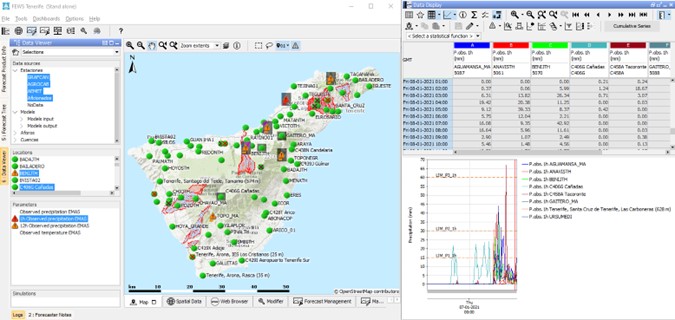
- Mobility & Infrastructures
Categories:
Floods are one of those weather events that impact cities and cause irreparable human and economic losses. Recent years have seen a worrying trend in this regard, but the good news is that they can be prevented.
The United Nations has set an ambitious goal to protect all the Earth’s inhabitants within five years from the consequences of climate change, such as floods, through early warning systems. The slogan of this proposal is “Early warning, early action”.
At Sener we have experience developing, implementing and maintaining this type of early warning system. We have already implemented an Early Alert System, EWS, in the Basque Country for the Basque Water Agency, and another on the island of Tenerife for the Water Council of Tenerife. Both are based on the Delft FEWS platform and are already operational.
What the EWS developed by Sener does
The EWS, Early Warning System, is a computer system that automates short-term flood forecasts for areas that the EWS hopes to protect. It gathers precipitation and temperature readings from automatic weather stations, weather radars at hydrometric stations, as well as short-term weather forecasts, and it predicts flooding using calibrated hydrological models. And it does all this automatically.

With all this information, the EWS issues automatic alarms for Civil Protection if the expected rainfall or water flow exceeds danger thresholds.
After issuing these alarms, this system can also be used to simulate different options for operating hydraulic infrastructures, thus turning it into a Decision Support System (DSS) as well.
Early Warning System Objectives
The goals of this system are, on the one hand, to automate the processes of gathering and processing hydrological and rainfall information in real time. This lets the emergency manager focus on making decisions.
And on the other, it gives Civil Protection sufficient warning so it can activate emergency plans, thus reducing the amount of damage and, ultimately and above all, saving lives.
The implementation of Early Warning Systems thus provides a non-structural measure to protect the population that offers a high return and has a positive impact on the protection of people and goods, at a low cost.
Óscar de Cos
Senior Consultant in Water and Environment
Civil Engineering degree from the University of Cantabria, programs in Disaster Risk Management (WB and Delft), Natural Disaster (McGill University) and Global Warming Science (MIT). He has 33 years of experience as a designer, project manager, business promoter and consultant, primarily in the fields of hydraulics, hydrology, flood prevention, real-time decision-making support systems, water planning of basins, water supply and sanitation works, flood protection and dam safety.









